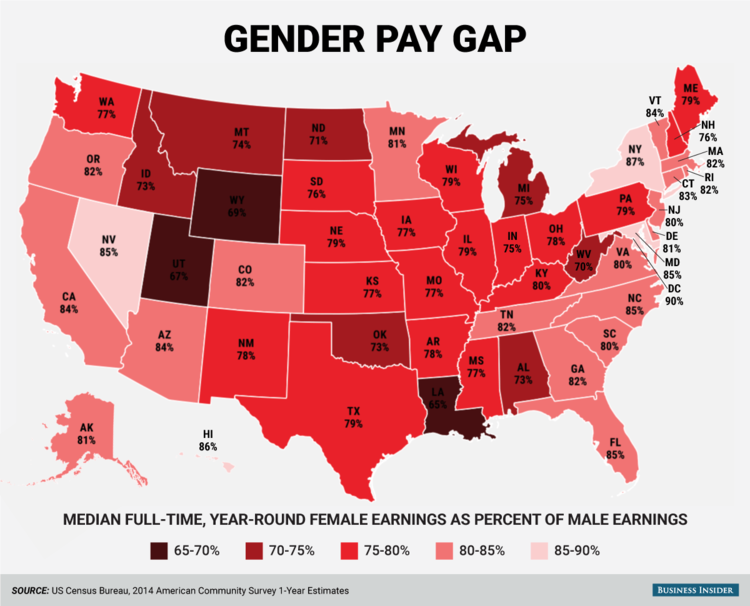The gender pay gap is the gap between what men and women are paid. Typically, men are paid more than woman are, despite doing the exact same job. The pay gap is a result of many things such as bias against working mothers and direct pay discrimination. Along with this, things such as racial bias, disability, access to education, and age come into play. Different groups of women experience different gaps of pay: for example, while a white woman gets 77% of what a white man gets, an Asian woman gets 85%, a Native Hawaiian or Pacific Islander woman gets 62%, a black or African American woman gets 61%, a Native American or Native Alaskan woman gets 58%, and a Hispanic or Latina woman gets 53%. The gender pay gap varies from state to state: it all depends on industries in each state and what oppurtunities they promote, demographics such as race, age, and education level, the attitudes and beliefs people of a specific state have about work and gender, and the strength of the state's pay discrimination laws and policies. As of 2017, Massachusetts as a state is ranked 13th in the country when it comes to the pay gap, and white women earn 83% of what a white man earns, though women of color still have it worse. The gender pay gap actually occurs across almost all occupations. A study which compared 114 companies who all had about 50,000 men and 50,000 women showed that out of every company, 107 companies had a significant gap in pay that favored men, six had no significant gap in pay, and one had a gap in pay that favored women. If a woman earned what a man did every year, she would earn billions more dollars: for example, women working as physicians and surgeons are paid 19 billion dollars less than what they would be paid if they were male. While the gender pay gap did shrink in between the 1980s and 2000s as more and more women entered the work force, the gap has since stalled, closing by less than a nickle. Closing the gender pay gap will need action to be taken by individuals, employers and company owners, and political leaders and policy makers, but at this point in time, it seems that no action is really being taken. As of now, the future looks bleak for closing the gender pay gap any time soon.
